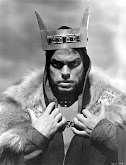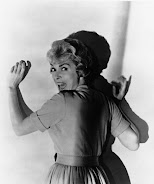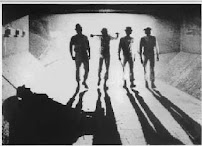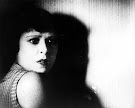Lighting
1) Still image analysis
Look at the still images on slides 33-37 of the Film Language PowerPoint linked above. Copy the images into your blog and answer the following questions for each image:
- Identify examples of high and low-key lighting.
- Say which depict top, back or under lighting.
- What effects are created by the lighting in each image?

- Low key lighting
- soft lighting for glamour
- weak filler for a mysterious, enigmatic effect (cant see where she is)
- Low key lighting
- soft lighting for glamour
- weak filler for a mysterious, enigmatic effect (cant see where she is)

- High key lighting for a realistic effect
- Strong back light

- low key lighting
- Strong back light to create a strong mysterious effect (can only see half his face)
- Mix of light as there is light deliberately on his badge and gun to show is the protagonist

- High key lighting
- Top lighting to make her look glamorous
- No filler -there is a shadow showing a little of her silhouette
- Her facial expression shows her fear and that she sees something scary

- Low key lighting
- Back light to see silhouette
- Week filler light as you can see their shadows

- High key lighting - to give realistic, contemporary feel

- High key lighting for a realistic effect
- Strong back light
- low key lighting
- Strong back light to create a strong mysterious effect (can only see half his face)
- Mix of light as there is light deliberately on his badge and gun to show is the protagonist
- High key lighting
- Top lighting to make her look glamorous
- No filler -there is a shadow showing a little of her silhouette
- Her facial expression shows her fear and that she sees something scary
- Low key lighting
- Back light to see silhouette
- Week filler light as you can see their shadows
- High key lighting - to give realistic, contemporary feel
- Low key lighting- strong contrast of black and white
- Weak filler light- Strong dark shadows
- Low key lighting- strong contrast of black and white
- Weak filler light- Strong dark shadows

- High key lighting - realistic
- strong and bold lighting
2) Film noir research
Research film noir - focusing on the genre’s distinctive lighting style. Make notes on the genre and particularly the use of lighting - bullet points are fine.
- Heavy use of low key lighting to create shadows and silhouette
- Focuses more on style and mood
- high ratio of key to filler light to create clear contrasts and strong dark shadows
- ¾ back key lighting, as the key or main light comes from behind the subject from one side.
- Shadow is more important than light
3) Film noir YouTube clip analysis
Finally, find a YouTube clip that fits the film noir genre and embed it under your research (the clip can be classic noir from the 1950s or something more recent - neo-noir). How does the clip's lighting fit the film noir genre?
The low key lighting creates a strong contrast between light and shadows. The under light is used to show the vivid smoke cloak around her face. This reinforces the neo noir genre convention of a mysterious, dangerous women. The key light only comes from one side to light up only a side of their face so the other side (the right) is covered to strengthen an eerie, enigmatic atmosphere
- High key lighting - realistic
- strong and bold lighting
Research film noir - focusing on the genre’s distinctive lighting style. Make notes on the genre and particularly the use of lighting - bullet points are fine.
- Heavy use of low key lighting to create shadows and silhouette
- Focuses more on style and mood
- high ratio of key to filler light to create clear contrasts and strong dark shadows
- ¾ back key lighting, as the key or main light comes from behind the subject from one side.
- Shadow is more important than light
3) Film noir YouTube clip analysis
Finally, find a YouTube clip that fits the film noir genre and embed it under your research (the clip can be classic noir from the 1950s or something more recent - neo-noir). How does the clip's lighting fit the film noir genre?

Comments
Post a Comment